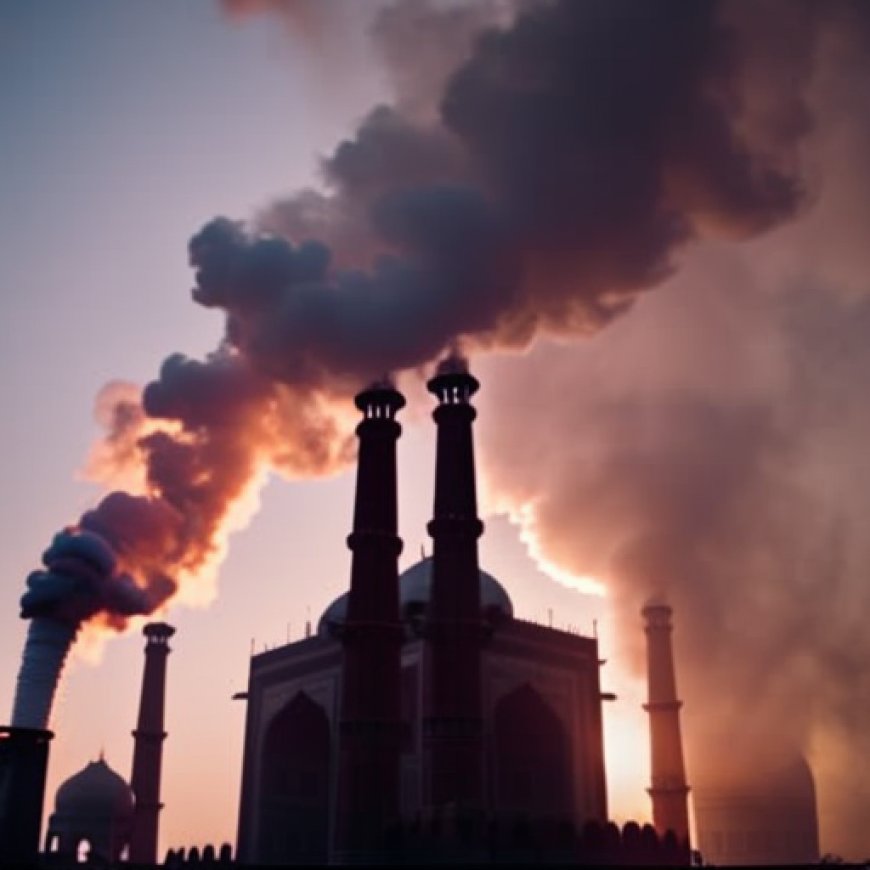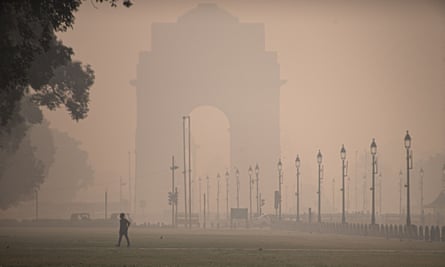Delhi air pollution spikes to 100 times WHO health limit
Delhi air pollution spikes to 100 times WHO health limit The Guardian


Air Quality in Delhi Reaches Severe Levels, Highlighting the Urgency of Sustainable Development Goals
On Friday, the air quality in Delhi reached severe levels, with a thick toxic smog enveloping the city. This marks the beginning of a pollution season that has become an annual catastrophe for India’s capital.
Immediate Measures Taken
- Schools were shut down.
- Non-essential construction was banned.
These measures were implemented as the air quality index in the city almost hit 500, which is the highest measurement and 100 times the limit considered to be healthy by the World Health Organization.
Causes of Deteriorating Air Quality
The decline in air quality can be attributed to several factors:
- A sharp rise in farmers in the neighbouring states of Haryana and Punjab burning their fields during the crop planting season.
- Winds carrying pollutants into Delhi.
- A drop in temperatures trapping the particles.
- Car emissions.
- Construction activities.
- Burning of rubbish at waste plants.
Impact on Public Health
Delhi, home to about 33 million people, consistently ranks as the most polluted city in the world. According to this year’s air quality life index, compiled by the University of Chicago’s energy policy institute, the people of Delhi could have their lives shortened by 11.9 years due to the poor air they breathe.
Doctors in Delhi have reported an increase in patients with respiratory problems, including coughs, colds, watery and irritated eyes, and breathing difficulties. People of all ages are affected by this alarming situation. It is crucial for individuals to wear masks and limit outdoor activities to essential tasks only.

Urgent Need for Sustainable Development Goals
The central pollution control board reported that pollution levels in Delhi in October were the worst since 2020. Despite the Delhi government’s claims of having a pollution action plan, implemented by the Aam Admi party (AAP), there has been little impact on the sharp decline in air quality that severely affects the lives of Delhi residents every year, typically between November and January.
Efforts made by the AAP government include sprinkling water on roads to reduce dust and the construction of two 80ft high “
SDGs, Targets, and Indicators
| SDGs | Targets | Indicators |
|---|---|---|
| SDG 3: Good Health and Well-being | 3.9 By 2030, substantially reduce the number of deaths and illnesses from hazardous chemicals and air, water, and soil pollution and contamination. | – Air quality index reaching severe levels – Increase in patients with breathing problems |
| SDG 11: Sustainable Cities and Communities | 11.6 By 2030, reduce the adverse per capita environmental impact of cities, including by paying special attention to air quality and municipal and other waste management. | – Air quality index reaching severe levels – Causes of pollution in the city (car emissions, construction, burning of rubbish) |
| SDG 13: Climate Action | 13.1 Strengthen resilience and adaptive capacity to climate-related hazards and natural disasters in all countries. | – Increase in farm fires in Punjab |
1. Which SDGs are addressed or connected to the issues highlighted in the article?
SDG 3: Good Health and Well-being
The article discusses the severe air pollution in Delhi, which has detrimental effects on the health of its residents. The high levels of pollution contribute to respiratory problems and other illnesses, impacting the well-being of the population.
SDG 11: Sustainable Cities and Communities
The article highlights the pollution issues in Delhi, emphasizing the need for attention to air quality and waste management in cities. The causes of pollution mentioned, such as car emissions, construction, and burning of rubbish, are relevant to this goal.
SDG 13: Climate Action
The article mentions the increase in farm fires in Punjab, which contributes to the air pollution in Delhi. This relates to the need for climate action to reduce the occurrence of such hazards.
2. What specific targets under those SDGs can be identified based on the article’s content?
Target 3.9: By 2030, substantially reduce the number of deaths and illnesses from hazardous chemicals and air, water, and soil pollution and contamination.
The severe air pollution in Delhi poses a risk to the health of its residents, leading to increased deaths and illnesses related to hazardous air pollution.
Target 11.6: By 2030, reduce the adverse per capita environmental impact of cities, including by paying special attention to air quality and municipal and other waste management.
The pollution issues in Delhi highlight the need for measures to reduce the adverse environmental impact of cities, particularly focusing on improving air quality and effective waste management.
Target 13.1: Strengthen resilience and adaptive capacity to climate-related hazards and natural disasters in all countries.
The increase in farm fires in Punjab, which contribute to the air pollution in Delhi, emphasizes the need for strengthening resilience and adaptive capacity to climate-related hazards.
3. Are there any indicators mentioned or implied in the article that can be used to measure progress towards the identified targets?
The following indicators can be used to measure progress towards the identified targets:
- Air quality index reaching severe levels: This indicates the extent of air pollution and its impact on the health of the population.
- Increase in patients with breathing problems: This reflects the health effects of air pollution and the need for improved air quality.
- Causes of pollution in the city (car emissions, construction, burning of rubbish): These indicate the sources of pollution that need to be addressed for improved environmental impact.
- Increase in farm fires in Punjab: This highlights the occurrence of climate-related hazards and the need for resilience-building measures.
4. SDGs, Targets, and Indicators
| SDGs | Targets | Indicators |
|---|---|---|
| SDG 3: Good Health and Well-being | 3.9 By 2030, substantially reduce the number of deaths and illnesses from hazardous chemicals and air, water, and soil pollution and contamination. | – Air quality index reaching severe levels – Increase in patients with breathing problems |
| SDG 11: Sustainable Cities and Communities | 11.6 By 2030, reduce the adverse per capita environmental impact of cities, including by paying special attention to air quality and municipal and other waste management. | – Air quality index reaching severe levels – Causes of pollution in the city (car emissions, construction, burning of rubbish) |
| SDG 13: Climate Action | 13.1 Strengthen resilience and adaptive capacity to climate-related hazards and natural disasters in all countries. | – Increase in farm fires in Punjab |
Behold! This splendid article springs forth from the wellspring of knowledge, shaped by a wondrous proprietary AI technology that delved into a vast ocean of data, illuminating the path towards the Sustainable Development Goals. Remember that all rights are reserved by SDG Investors LLC, empowering us to champion progress together.
Source: theguardian.com

Join us, as fellow seekers of change, on a transformative journey at https://sdgtalks.ai/welcome, where you can become a member and actively contribute to shaping a brighter future.







